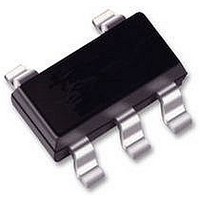AD8615AUJZ Analog Devices Inc, AD8615AUJZ Datasheet - Page 14

AD8615AUJZ
Manufacturer Part Number
AD8615AUJZ
Description
OP AMP, PRECISION RRI/O, SMD, 8615
Manufacturer
Analog Devices Inc
Datasheet
1.AD8615AUJZ.pdf
(20 pages)
Specifications of AD8615AUJZ
Op Amp Type
Precision
No. Of Amplifiers
1
Bandwidth
24MHz
Slew Rate
12V/µs
Supply Voltage Range
2.7 To 5.5V
Amplifier Case Style
TSOT-23
No. Of Pins
5
Operating Temperature Range
-40°C To
Lead Free Status / RoHS Status
Lead free / RoHS Compliant
Available stocks
Company
Part Number
Manufacturer
Quantity
Price
Part Number:
AD8615AUJZ
Manufacturer:
ADI/亚德诺
Quantity:
20 000
Part Number:
AD8615AUJZ-R2
Manufacturer:
ADI/亚德诺
Quantity:
20 000
Company:
Part Number:
AD8615AUJZ-REEL7
Manufacturer:
AD
Quantity:
393
Part Number:
AD8615AUJZ-REEL7
Manufacturer:
ADI/亚德诺
Quantity:
20 000
Company:
Part Number:
AD8615AUJZ7
Manufacturer:
Analog Devices Inc
Quantity:
56 797
AD8615/AD8616/AD8618
These thermal resistance curves were determined using
the AD8616 thermal resistance data for each package and
a maximum junction temperature of 150°C. The following
formula can be used to calculate the internal junction tem-
perature of the AD8615/AD8616/AD8618 for any application:
where:
T
P
θ
T
To calculate the power dissipated by the AD8615/
AD8616/AD8618, use
where:
I
V
V
The quantity within the parentheses is the maximum voltage
developed across either output transistor.
POWER CALCULATIONS FOR VARYING OR
UNKNOWN LOADS
Often, calculating power dissipated by an integrated circuit to
determine if the device is being operated in a safe range is not
as simple as it might seem. In many cases, power cannot be
directly measured. This may be the result of irregular output
waveforms or varying loads. Indirect methods of measuring
power are required.
There are two methods to calculate power dissipated by
an integrated circuit. The first is to measure the package
temperature and the board temperature. The second is
to directly measure the circuits supply current.
LOAD
JA
DISS
J
A
S
OUT
= junction temperature
= supply voltage
= package thermal resistance, junction-to-case
= ambient temperature of the circuit
= power dissipation
T
P
= output load current
= output voltage
DISS
J
= P
= I
DISS
LOAD
× θ
× ( V
JA
+ T
S
– V
A
OUT
)
Rev. C | Page 14 of 20
Calculating Power by Measuring Ambient and Case
Temperature
The two equations for calculating junction temperature are
where:
T
T
θ
where T
data sheet.
The two equations for calculating P (power) are
Once power has been determined, it is necessary to recalculate
the junction temperature to ensure that it has not been
exceeded.
The temperature should be measured directly on and near the
package, but not touching it. Measuring the package can be
difficult. A very small bimetallic junction glued to the package
can be used, or an infrared sensing device can be used if the
spot size is small enough.
Calculating Power by Measuring Supply Current
Power can be calculated directly if the supply voltage and
current are known. However, the supply current can have a dc
component with a pulse directed into a capacitive load, which
could make the rms current very difficult to calculate. This
difficulty can be overcome by lifting the supply pin and
inserting an rms current meter into the circuit. For this method
to work, make sure the current is delivered by the supply pin
being measured. This is usually a good method in a single-
supply system; however, if the system uses dual supplies, both
supplies may need to be monitored.
JA
J
A
= junction temperature
= ambient temperature
= the junction-to-ambient thermal resistance
T
T
T
P = ( T
J
J
A
= T
= T
C
+ P θ
is case temperature and θ
A
C
A
+ P θ
+ P θ
– T
JA
= T
C
)/( θ
JA
JC
C
+ P θ
JC
– θ
JC
JA
)
JA
and θ
JC
are given in the













